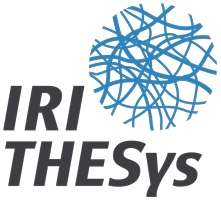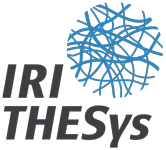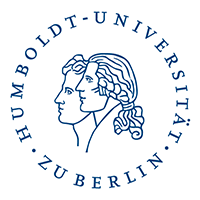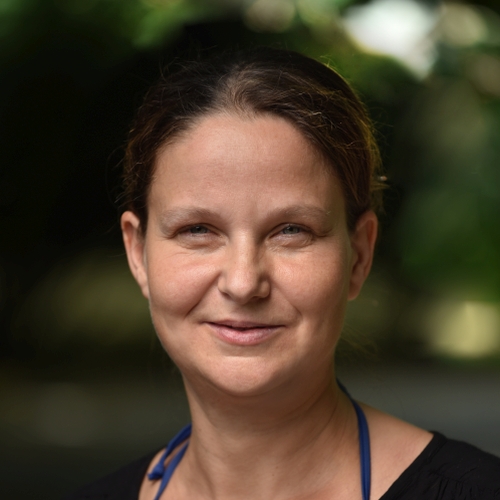THESys Project
Central strategies for sustainable urban planning are re-densification and the concentration of diverse functions within a dense urban context, but also the quantitative and qualitative development of urban green and blue structures and their compensation and relief functions to promote the health of citizens. Small-scale green structures within residential environments are rarely the focus of interdisciplinary research or at the forefront when it comes to the work of planners, architects and the housing industry. However, they have a very direct effect on public and mental health, on environmental justice, the availability of ecosystem services, people’s experience of biodiversity and therefore the quality of life of local residents. The qualitative and quantitative appreciation and the sustainable development of green residential areas is therefore an important, health-relevant component of the strategy of ecological design.
The HealthyLiving project links ecological, economic and socio-cultural perspectives and discourses. The field of study includes historical and current planning strategies for green residential areas as a health resource through inventory and benchmarking (status quo and assessment), health relevant ecosystem services of green residential areas, and their contribution to urban environmental hygiene issues (environment and health) as well as to biodiversity.
The HealthyLiving project designs concepts and implementation strategies for a sustainable development of green residential areas in urban spaces and thereby aims to reinforce and optimise biodiversity-friendly and health-promoting ecosystem services. Concrete measures are derived, evaluated according to their environmental, socio-cultural and economic effects, and combined in a planning tool for planners and decision-makers. The result, protecting and improving human health gains a higher degree relevance and significance when it comes to future planning.
The HealthyLiving project is funded by the Fritz and Hildegard Berg Foundation, in the Association for the Promotion of Science and Humanities in Germany.
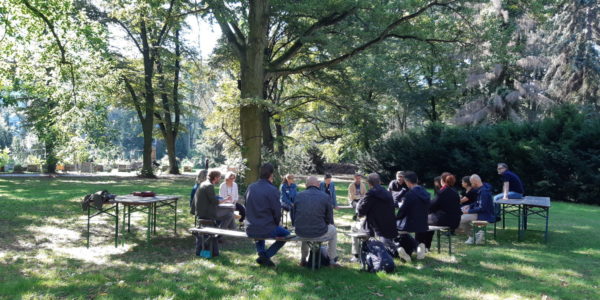
Output
Mohr-Stockinger, S., Sanft, S.J., Büttner, F., Butenschön, S., Rennert, R., Säumel, I. (2023) Awakening the sleeping giant of urban green in times of crisis – Coverage, co-creation and practical guidelines for optimizing biodiversity-friendly and health-promoting residential greenery. Frontiers in Public Health. doi: 10.3389/fpubh.2023.1175605
Zerbe, S., Petelka, J., Bonari, G., Wilhalm, Th., Säumel, I. (2023) Traditionelle Heilpflanzen als kulturelle Schlüsselarten für Naturschutz und Ökosystemrenaturierung. Naturschutz und Landschaftsplanung, 55 (05). doi: 10.1399/NuL.2023.05.02.
Scherrer, M.M., Zerbe, St., Petelka, J., Säumel, I. (2023) Understanding old herbal secrets: the renaissance of traditional medicinal plants beyond the twenty classic species? Front. Pharmacol. Sec. Ethnopharmacol. 14: 10.3389. doi: 10.3389/fphar.2023.1141044.
Säumel, I., Sanft, S. (2022) Crisis mediated new discoveries, claims and encounters: Changing use and perception of residential greenery in multistory housing in Berlin, Germany. In: Urban Forestry & Urban Greening. https://doi.org/10.1016/j.ufug.2022.127622
Petelka, J. Bonari, G., Säumel, I., Plagg, B., Zerbe, S. (2022) Conservation with local people: medicinal plants as Cultural Keystone Species in the Southern Alps. Ecology & Society. (accepted)
Schmid, H.L.; Säumel, I. (2021) Outlook and Insights: Perception of residential greenery in multistorey housing estates in Berlin, Germany. In: Urban Forestry & Urban Greening. https://doi.org/10.1016/j.ufug.2021.127231
Pille, L.; Säumel, I. (2021) The water-sensitive city meets biodiversity: habitat services of rain water management measures in highly urbanized landscapes. Ecology and Society 26(2):23. https://doi.org/10.5751/ES-12386-260223
Säumel, Ina; Hogrefe, Jan; Battisti, Luca; Wachtel, Thomas; Larcher, Federica (2020) The healthy green living room at one’s doorstep? Use and perception of residential greenery in Berlin, Germany. In: Urban Forestry & Urban Greening. Volume 58, March 2021, 126949; https://doi.org/10.1016/j.ufug.2020.126949.
Mohr-Stockinger, Sonja (2020) Leitfaden “Gesundheitsorientierte Umgestaltung von Wohnumfeldgrün – Leitfaden für Wohnungsbaugenossenschaften”
Battisti, L.; Pille, L.; Wachtel, T.; Larcher, F.; Säumel, I. (2019) Residential Greenery: State of the Art and Health-Related Ecosystem Services and Disservices in the City of Berlin. Sustainability 2019, 11, 1815. https://doi.org/10.3390/su11061815 (Special Issue The Future of Sustainable Communities: Planning, Design and Implementation [3])
Säumel, I. & Butenschön, S. (2018) HealthyLiving: Strategie und Planungsinstrument für gesundheitsförderndes Wohnumfeldgrün in der Stadt der Zukunft. Edition Nachhaltige Gesundheit in Stadt und Region/Sustainable Urban & Regional Health Bd.1: „Stadt der Zukunft – Gesund und nachhaltig” Hg.: Fehr, Hornberg
Csizmadia D., Säumel, I., Pille L., Szijagyi K., Balogh P.I., (2017) Water sensitive design potentials in Paris, Berlin, and Budapest revisited, Journal Technical Transaction, Environmental Engineering, doi 10.4467/2353737XCT.17.009.6106
Csizmadia D., Szijagyi K., Balogh P.I., Säumel, I. (2017) More than Green: Implementation of multifunctional blue-green infrastructure in residential areas of European Cities, Acta Horticulturae. doi 10.17660/ActaHortic.2017.1189.110
Project Team
PI: Ina Säumel (IRI THESys)
Researchers: Sylvia Butenschön (TU Berlin), Luca Battisti (University of Turin), Lauranne Pille (TU Berlin), Hannah-Lea Schmid (Uni Bielefeld, Uni Bozen), Jan Hogrefe (TU Berlin), Sonja Mohr-Stockinger (Kommunen für biologische Vielfalt e.V.), Frederike Büttner (Büro für Bürger:innenbeteiligung, Bezirksamt Berlin Charlottenburg), Lea Matscheroth (Uni Potsdam), Thomas Wachtel (HU Berlin), Simone Sanft (FU Berlin)
